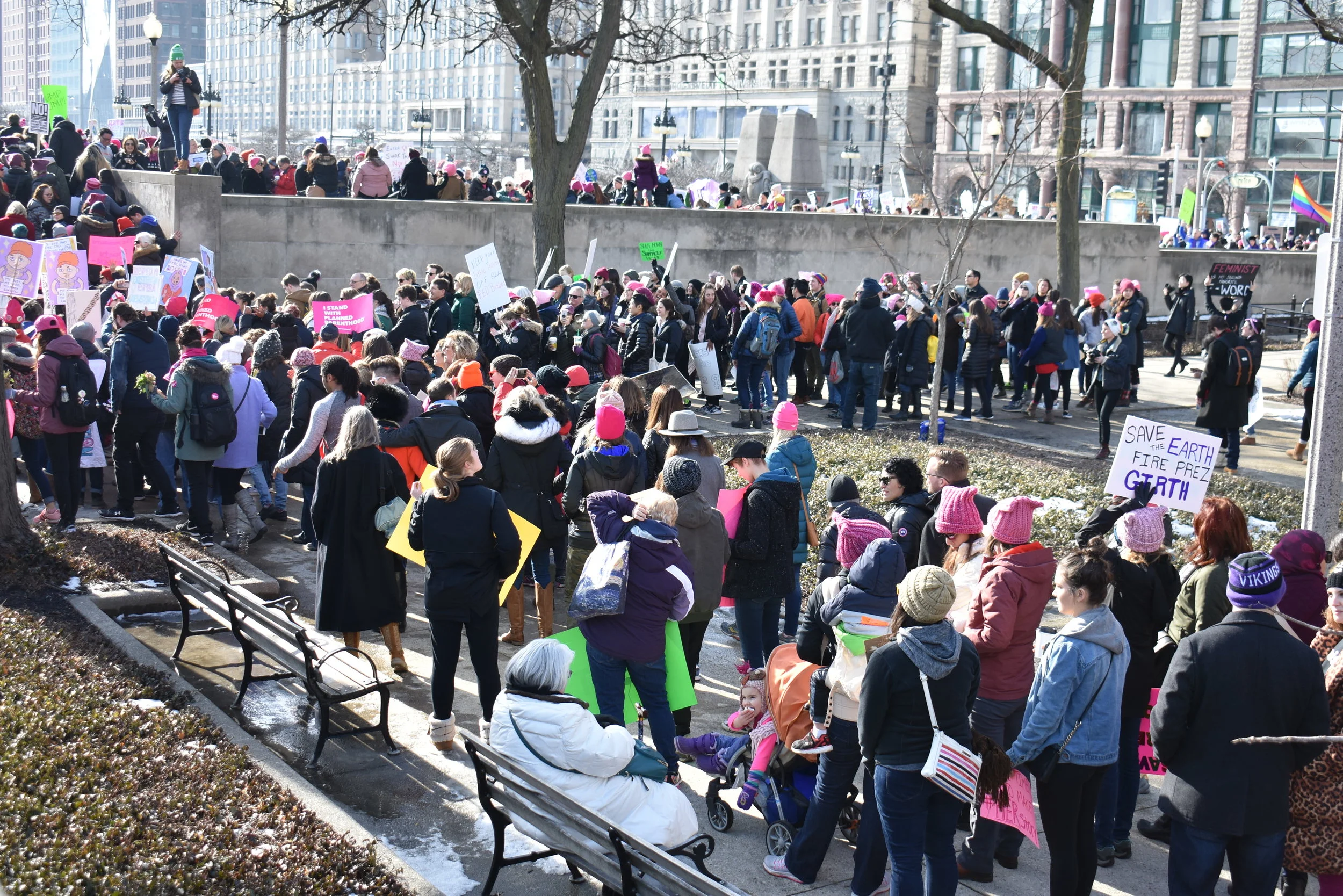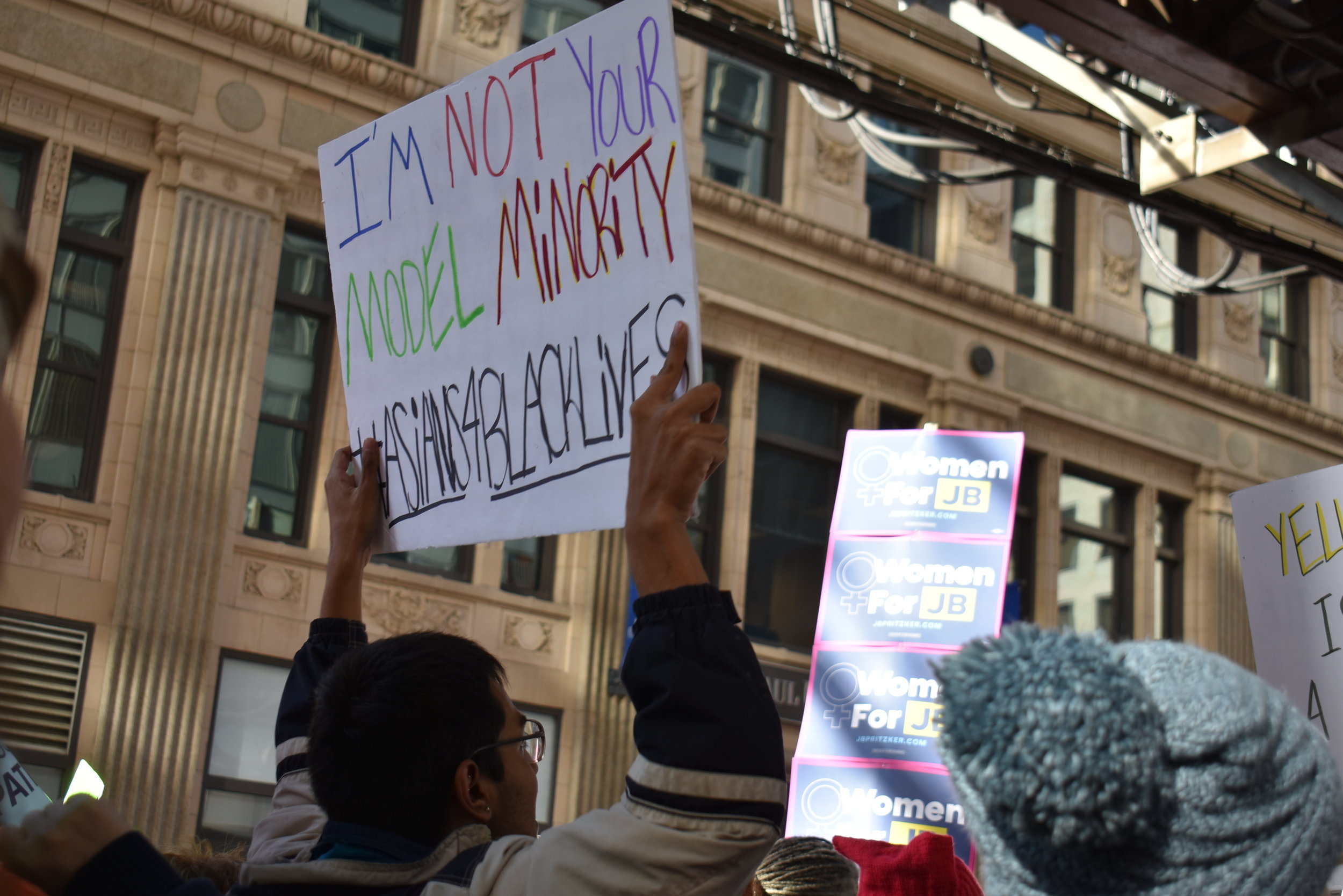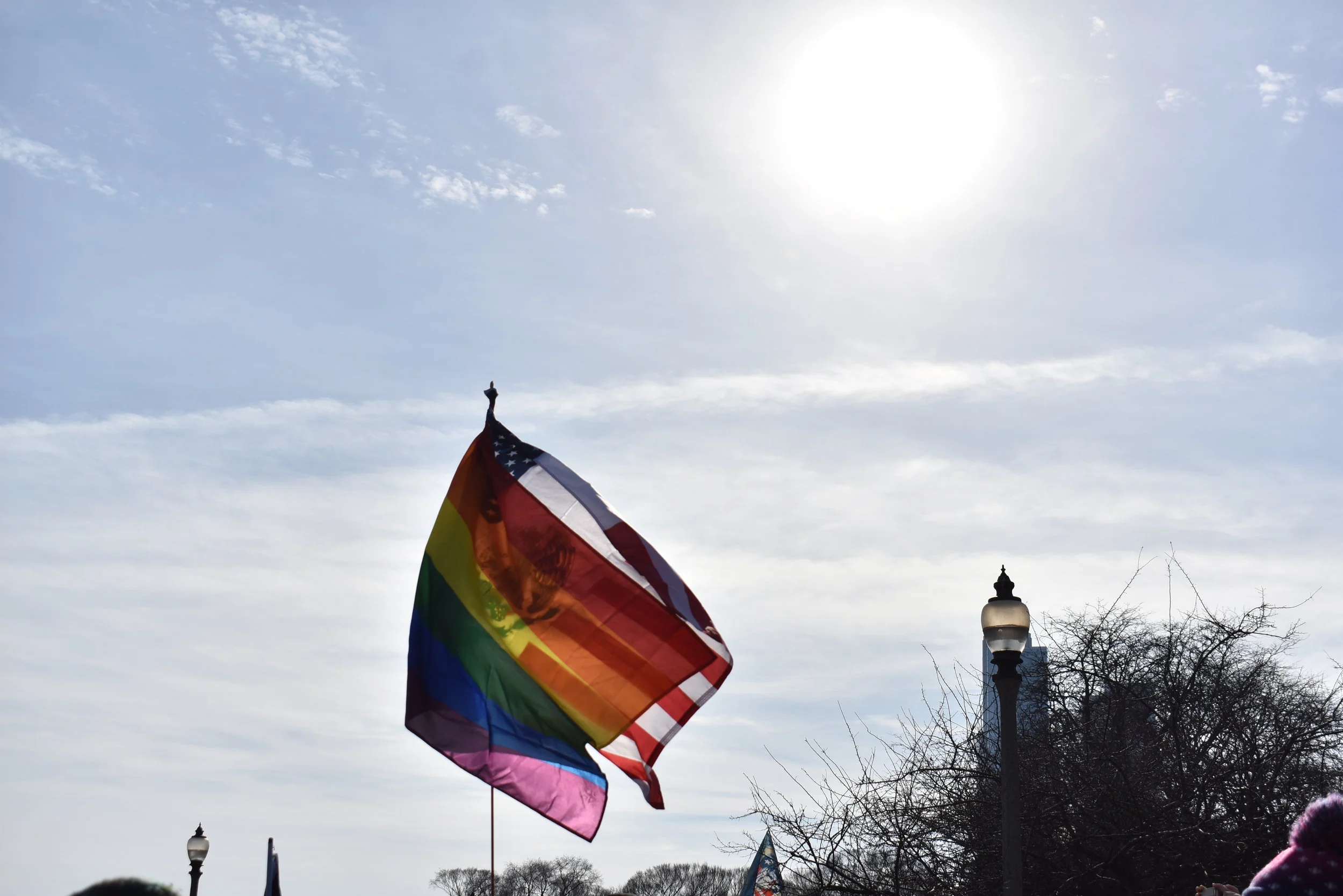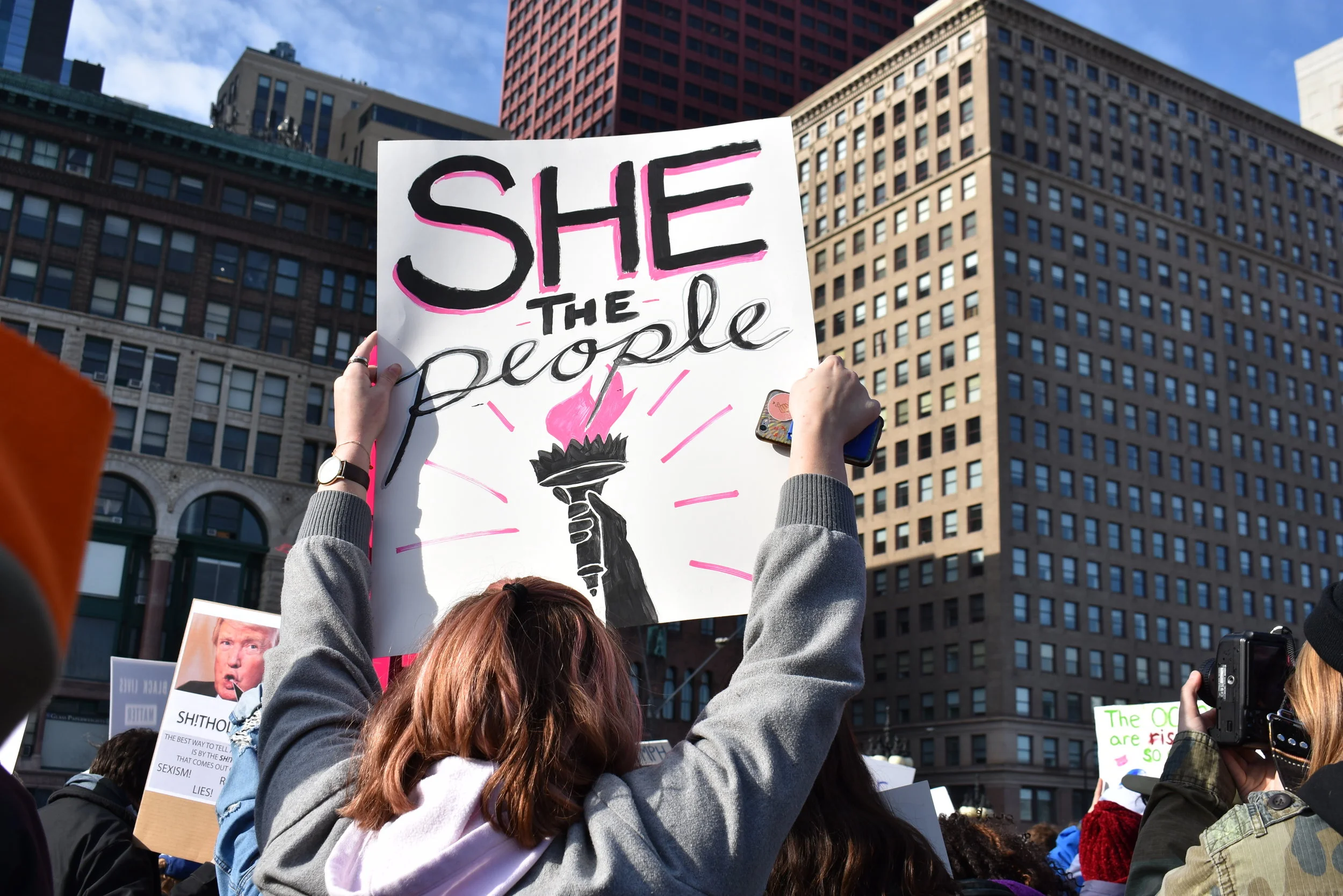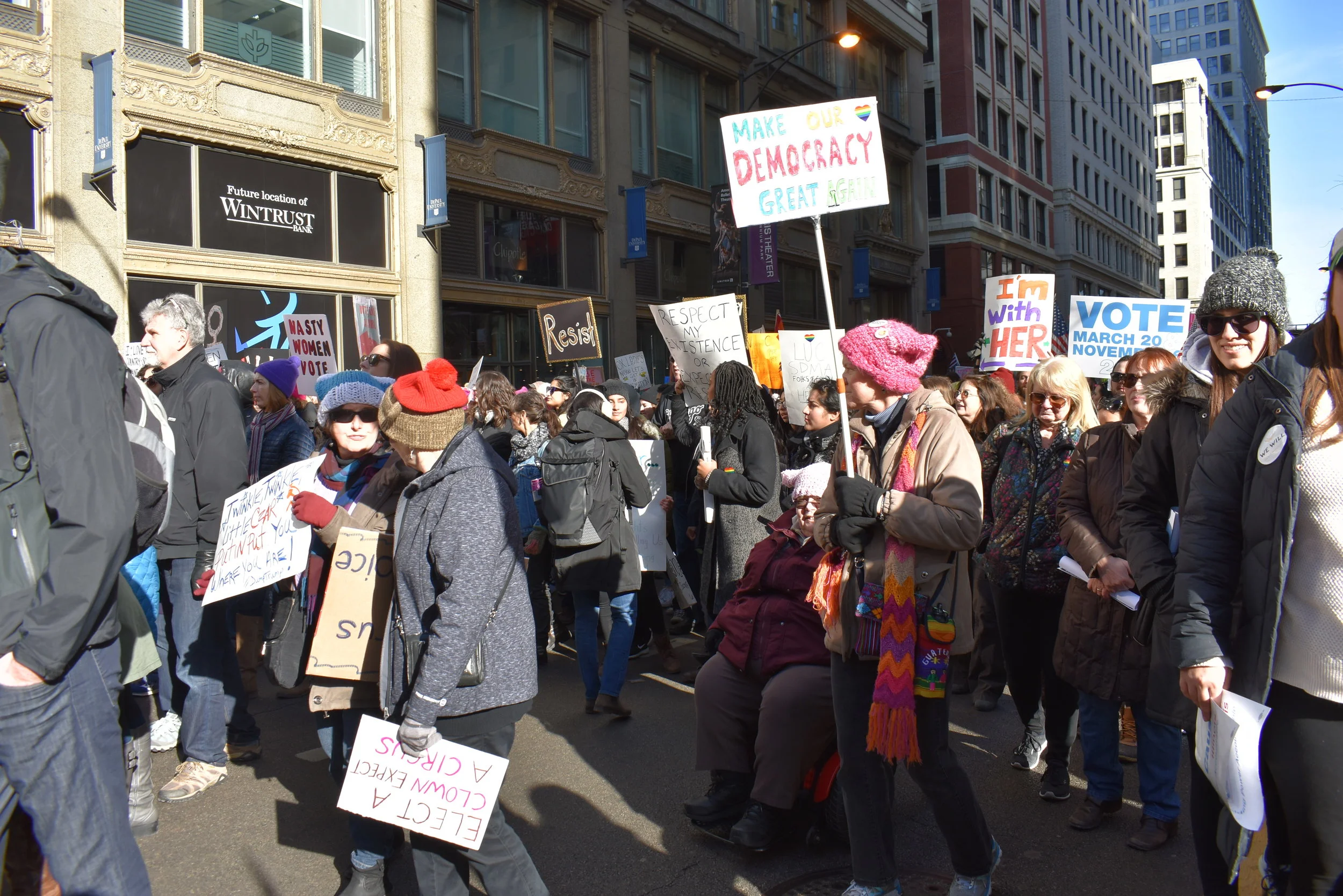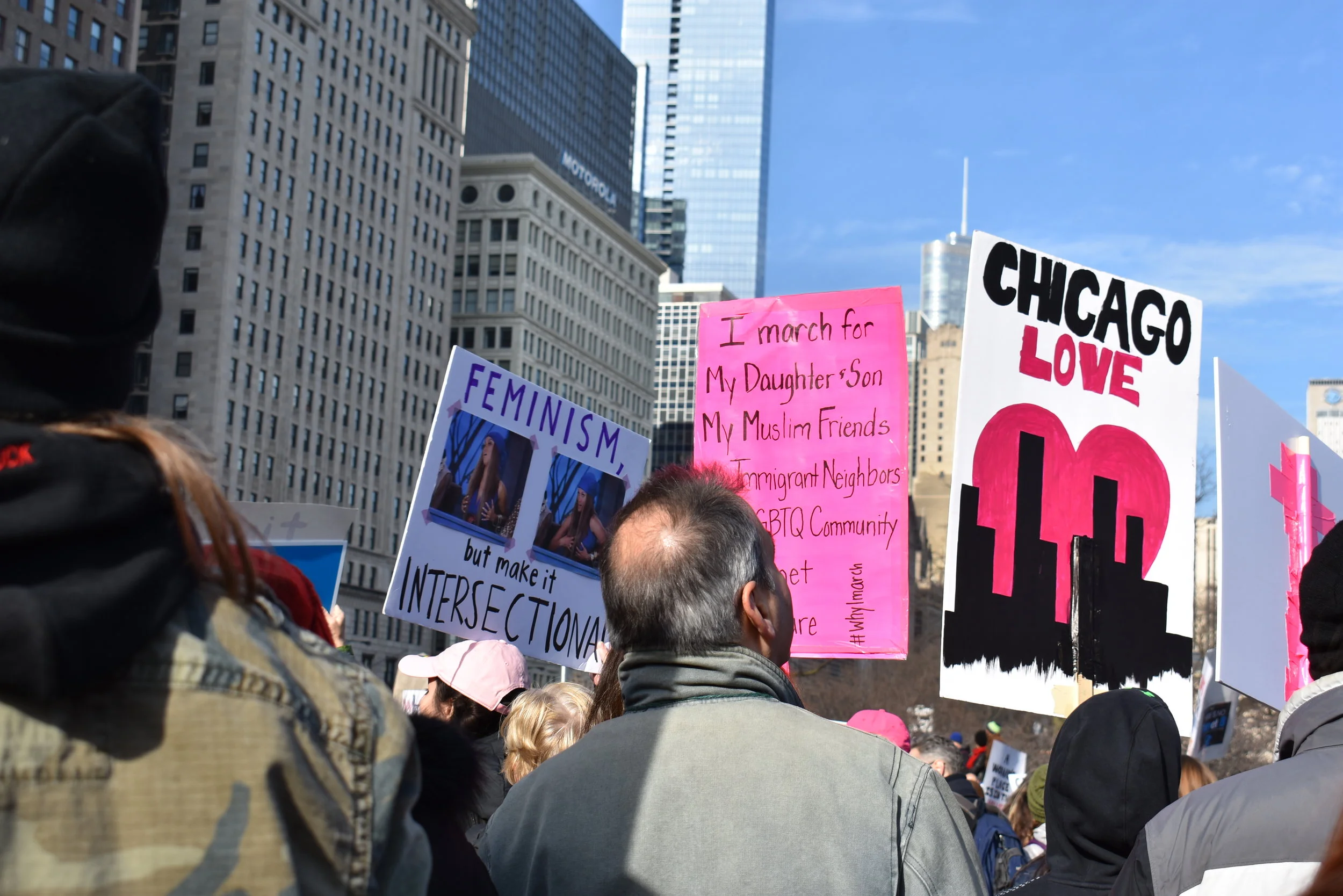I watched Trump's State of the Union Address this year with a few of my close girl friends. We are a group of unapologetic feminists who regularly talk about politics and the strong women politicians we idolize. So when we watched the female members of our current congress assemble in front of Trump, wearing all white to represent the suffragette movement, we of course were all for it.
Watching these strong, kick ass Congresswomen–the most diverse and largest cohort of women in Congress to date–unite to recognize kick ass women from eras past felt unbelievably empowering in the moment.
Image via
This year's State of the Union is obviously not the first time women, in particular, have come together to make a political statement through a collective fashion choice. In recent years, actresses and congresswomen alike have worn black in solidarity with the #MeToo movement, and the pink pussy hats that appeared in the first Women's March in 2017 are still seen as a symbolic middle finger to Trump and the pervasive culture of sexual harassment.
Image via
Symbolic dressing is hardly a new trend. Our congresswomen were of course referring to the original symbolic fashion choices made by the suffragettes, who famously wore all-white. However, one might argue that recent uses of fashion as a political statement coincide with a general uptick in progressive political movements in response to the Trump presidency.
In such a divisive climate, it can be easy to criticize symbolic fashion choices as a cop-out; as an action that fails to advance actual change. This, taken alongside criticisms of fashion labels and corporations slapping activist messaging on their clothes to turn a profit, can render symbolic or political fashion statements unpopular or ineffective choices in progressive activist circles.
Image via
Personally though, I am all for this kind of symbolic dressing. Even if our Congresswomen’s’ decisions to wear white to the State of the Union didn't actually create concrete change, their action stirred up emotions for my friends and I, gave us a sense of empowerment and unity, and reminded us of the unique and important place of strong women in the fight against Trump.
Symbolic fashion choices generate dialogue. The media did not ignore the Congresswomen’s’ decisions to wear white. It was talked and Tweeted about constantly following the address. They reminded us that the fight for women's equality is not over, and that alone is of incredible historical significance.
Feature image via








